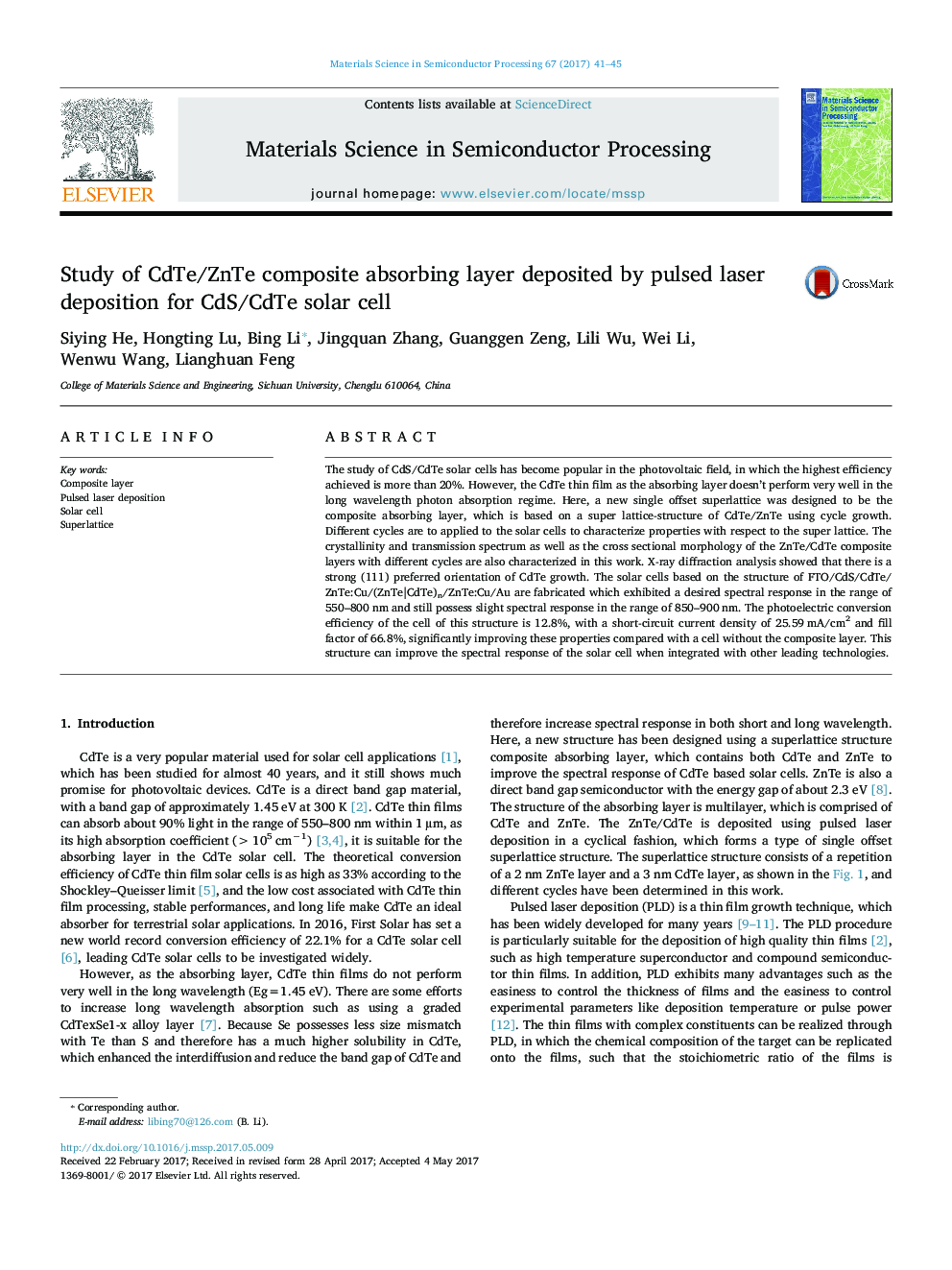| Article ID | Journal | Published Year | Pages | File Type |
|---|---|---|---|---|
| 5005929 | Materials Science in Semiconductor Processing | 2017 | 5 Pages |
Abstract
The study of CdS/CdTe solar cells has become popular in the photovoltaic field, in which the highest efficiency achieved is more than 20%. However, the CdTe thin film as the absorbing layer doesn't perform very well in the long wavelength photon absorption regime. Here, a new single offset superlattice was designed to be the composite absorbing layer, which is based on a super lattice-structure of CdTe/ZnTe using cycle growth. Different cycles are to applied to the solar cells to characterize properties with respect to the super lattice. The crystallinity and transmission spectrum as well as the cross sectional morphology of the ZnTe/CdTe composite layers with different cycles are also characterized in this work. X-ray diffraction analysis showed that there is a strong (111) preferred orientation of CdTe growth. The solar cells based on the structure of FTO/CdS/CdTe/ZnTe:Cu/(ZnTe|CdTe)n/ZnTe:Cu/Au are fabricated which exhibited a desired spectral response in the range of 550-800Â nm and still possess slight spectral response in the range of 850-900Â nm. The photoelectric conversion efficiency of the cell of this structure is 12.8%, with a short-circuit current density of 25.59Â mA/cm2 and fill factor of 66.8%, significantly improving these properties compared with a cell without the composite layer. This structure can improve the spectral response of the solar cell when integrated with other leading technologies.
Related Topics
Physical Sciences and Engineering
Engineering
Electrical and Electronic Engineering
Authors
Siying He, Hongting Lu, Bing Li, Jingquan Zhang, Guanggen Zeng, Lili Wu, Wei Li, Wenwu Wang, Lianghuan Feng,
